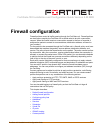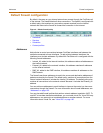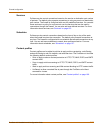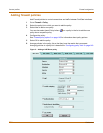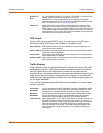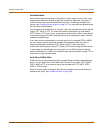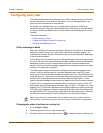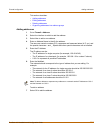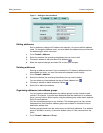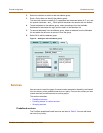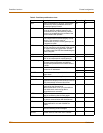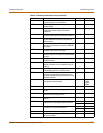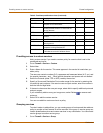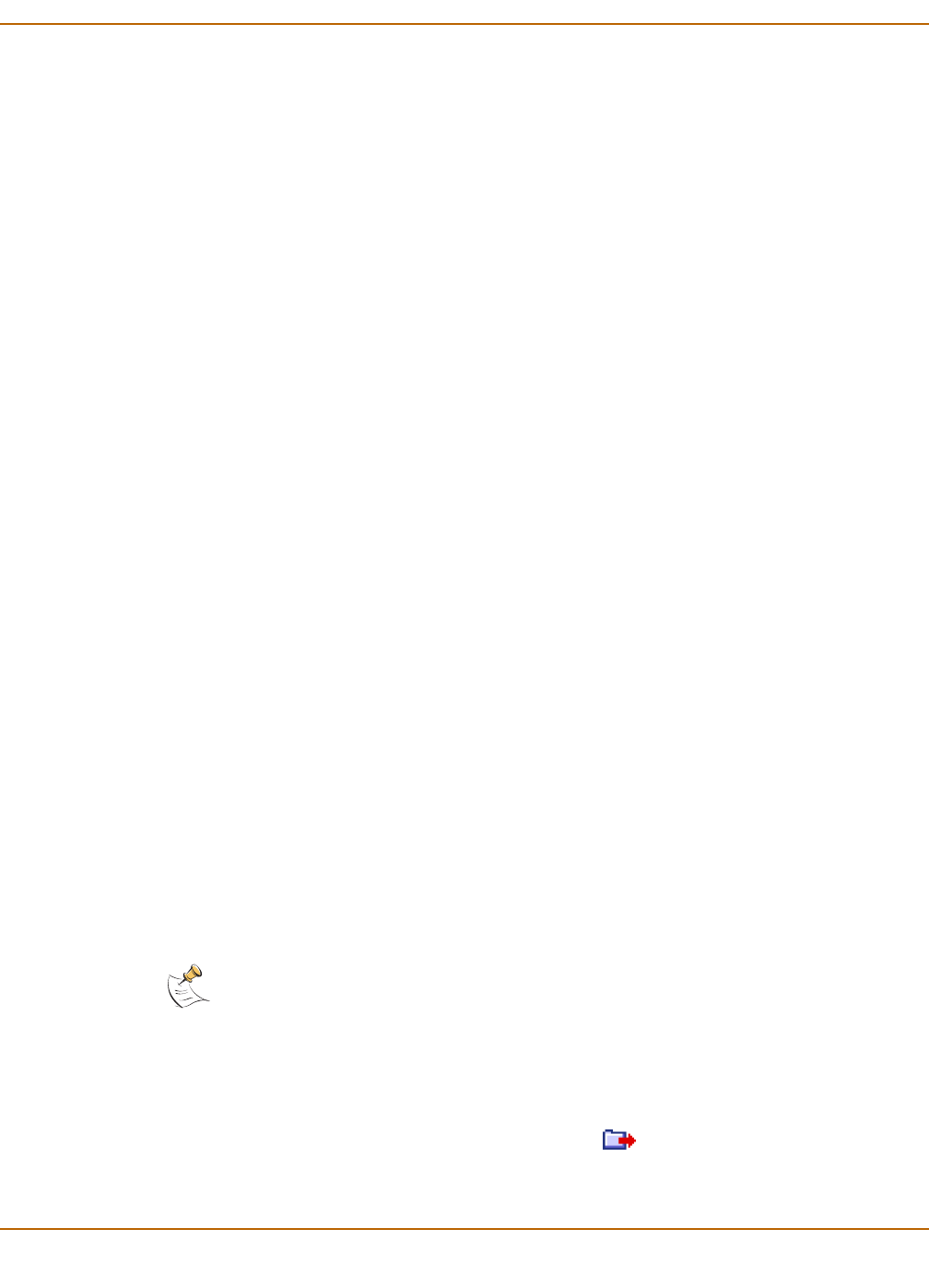
Firewall configuration Policy matching in detail
FortiGate-100 Installation and Configuration Guide 149
Configuring policy lists
The firewall matches policies by searching for a match starting at the top of the policy
list and moving down until it finds the first match. You must arrange policies in the
policy list from more specific to more general.
For example, the default policy is a very general policy because it matches all
connection attempts. When you create exceptions to this policy, you must add them to
the policy list above the default policy. No policy below the default policy will ever be
matched.
This section describes:
• Policy matching in detail
• Changing the order of policies in a policy list
• Enabling and disabling policies
Policy matching in detail
When the FortiGate unit receives a connection attempt at an interface, it must select a
policy list to search through for a policy that matches the connection attempt. The
FortiGate unit chooses the policy list based on the source and destination addresses
of the connection attempt.
The FortiGate unit then starts at the top of the selected policy list and searches down
the list for the first policy that matches the connection attempt source and destination
addresses, service port, and time and date at which the connection attempt was
received. The first policy that matches is applied to the connection attempt. If no policy
matches, the connection is dropped.
The default policy accepts all connection attempts from the internal network to the
Internet. From the internal network, users can browse the web, use POP3 to get
email, use FTP to download files through the firewall, and so on. If the default policy is
at the top of the Int->Ext policy list, the firewall allows all connections from the internal
network to the Internet because all connections match the default policy. If more
specific policies are added to the list below the default policy, they are never matched.
A policy that is an exception to the default policy, for example, a policy to block FTP
connections, must be placed above the default policy in the Int->Ext policy list. In this
example, all FTP connection attempts from the internal network would then match the
FTP policy and be blocked. Connection attempts for all other kinds of services would
not match with the FTP policy but they would match with the default policy. Therefore,
the firewall would still accept all other connections from the internal network.
Changing the order of policies in a policy list
1 Go to Firewall > Policy.
2 Select the policy list that you want to rearrange.
3 Choose a policy to move and select Move To to change its order in the policy list.
Note: Policies that require authentication must be added to the policy list above matching
policies that do not; otherwise, the policy that does not require authentication is selected first.



